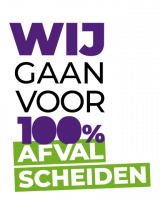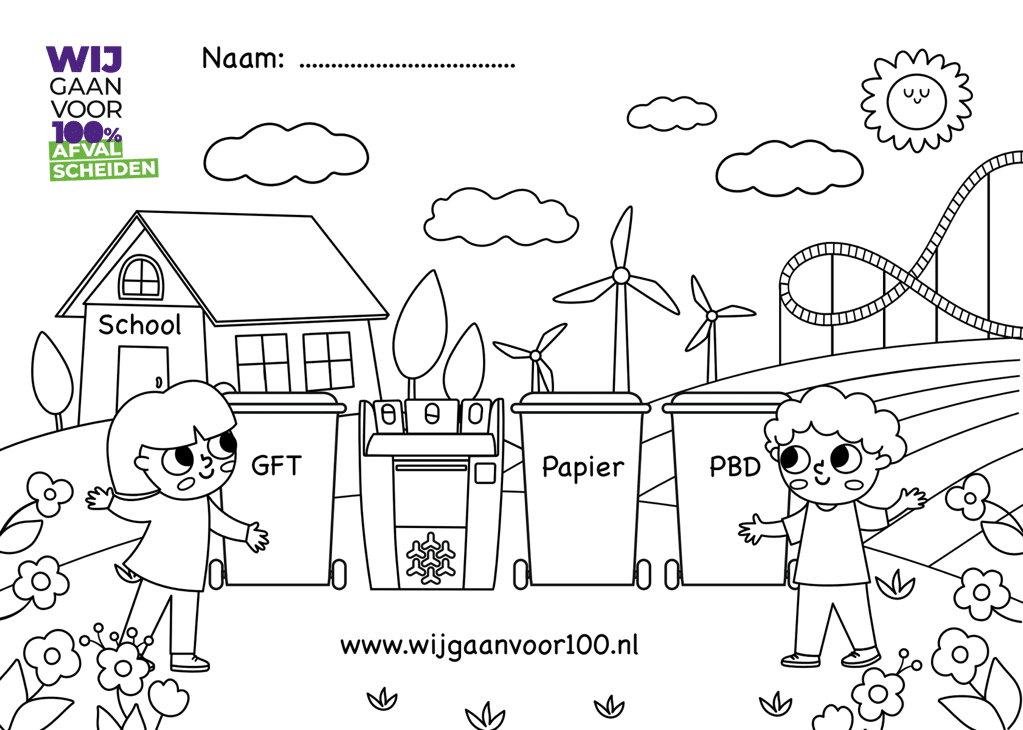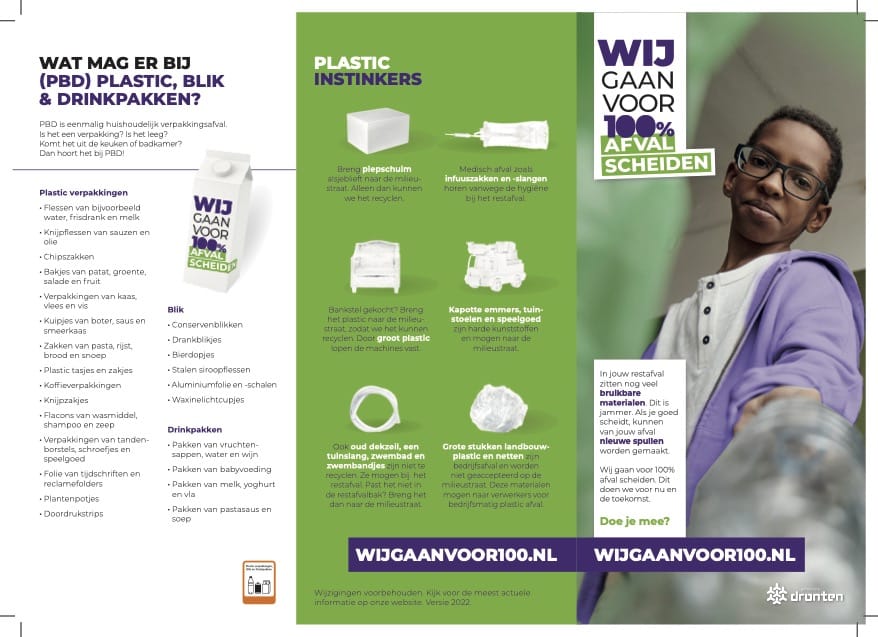Engage with the class
Learn all about waste separation
Nice that you want to pay attention to waste separation in your class or at your school. On this page we would like to offer you inspiration and tools to draw attention to the theme. Our residual waste contains many useful materials. This is a shame. If we separate waste properly, new materials can be made from it.
Request a guest lesson on waste separation
Spin the wheel of waste and test your class' knowledge of waste separation. Why is waste separation important? How do you do it at home or at school? Where do you leave your potato chip bag and empty pizza box? The waste coach will gladly take your class into the world of "clues.
Would you like a classroom visit from our waste coach or would you like a tour of our mobile environmental site? Leave your details with us and we'll get back to you.
Cleaning up litter with the class.
Every year we visit all elementary schools to teach about litter and clean up around the school. Your school is automatically invited to this.
Want to know what happens to collected litter? Then consider taking a tour of our recycling yard.
Leave your details with us and we will contact you.
Download your free teaching materials here
Make children aware of (litter) waste and recycling. The website "getting started with waste" offers free materials and plenty of inspiration for classroom lessons and bso activities.
The website is aimed at primary and secondary teachers and educators, staff of bso organizations and other education professionals.
Engage with the class
Downloads and videos
That easy divorce is
GFT stands for vegetable, fruit and garden waste. Read all about separating GFT waste.
PBD stands for Plastic, Cans and Drinking Packs and is single-use household packaging waste.
Only clean paper and cardboard can be recycled. Make it flat and small.
Empty bottles, jars and other glass waste may be deposited in the bottle bank.
The great thing about clothes and shoes is that you can reuse them often.
Federico and Isabelle Talen
"Also at school we separate waste"
Federico (10) and Isabella Talen (15) from Dronten make sure the garbage is neatly separated at home. Separation begins in the kitchen. Federico: ' There is a separate bag in the kitchen for plastic waste and a separate bin for green waste.' Isabella adds: 'We flatten large cardboard boxes and take them straight to the large paper container outside.'
The brother and sister advocate separating waste because it is better for the environment. 'It's important to reduce our impact on the environment, which we do by recycling. For example: if you recycle paper, you don't have to cut down as many trees! The generation after us also needs oxygen.' Separating waste starts at home, but continues at school. Isabella: 'At my secondary school there is a large plastic bottle, to collect plastic drinking bottles. Handy, because it allows you to see right away what you can throw in there.' Federico: "Sometimes it's not so easy to see in which container you can throw something away. For example, I learned that packaging, like a milk carton, is made up of plastic and cardboard. Now I know to take off the cap and put it with the plastic.' As a tip for peers, the two give: "When in doubt, don't do it. Ask your parents or the teacher before throwing away something you're not sure about. After all, no one likes rummaging through the garbage to find something!

Tips from waste coach Han
Tip 1
PBD is mainly household packaging material. So the plastic of meat products, the bread bag and the plastic packaging of vegetables.
Tip 2
Buy a trash can with three or four different compartments. For food waste (GFT), plastic, can and drink containers (PBD), residual waste and paper.
More tips?
Want more tips on separating trash? Employee collection Sander knows exactly what belongs in which bin.



